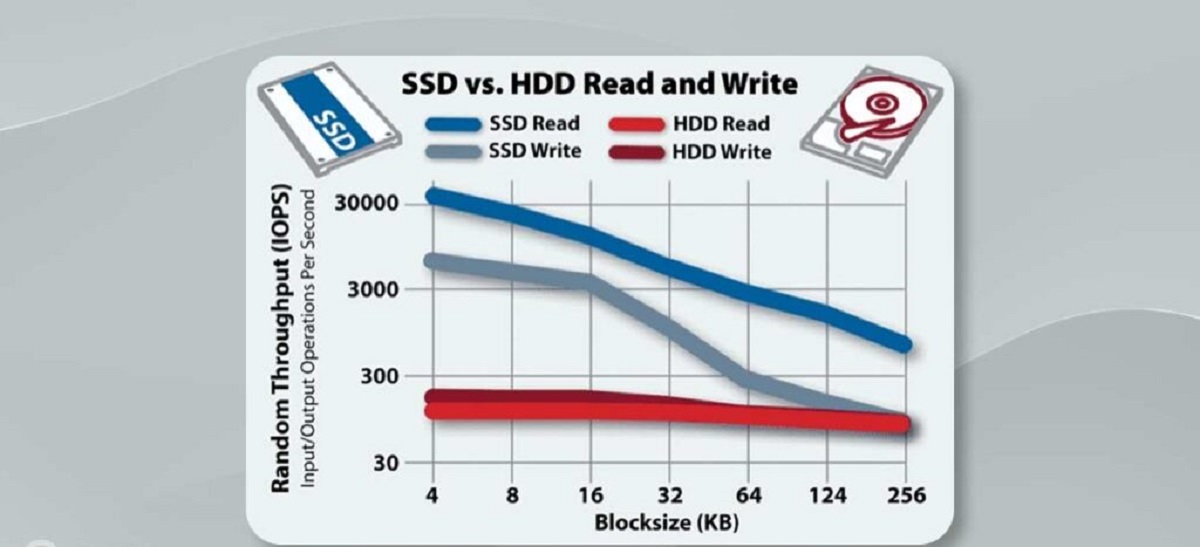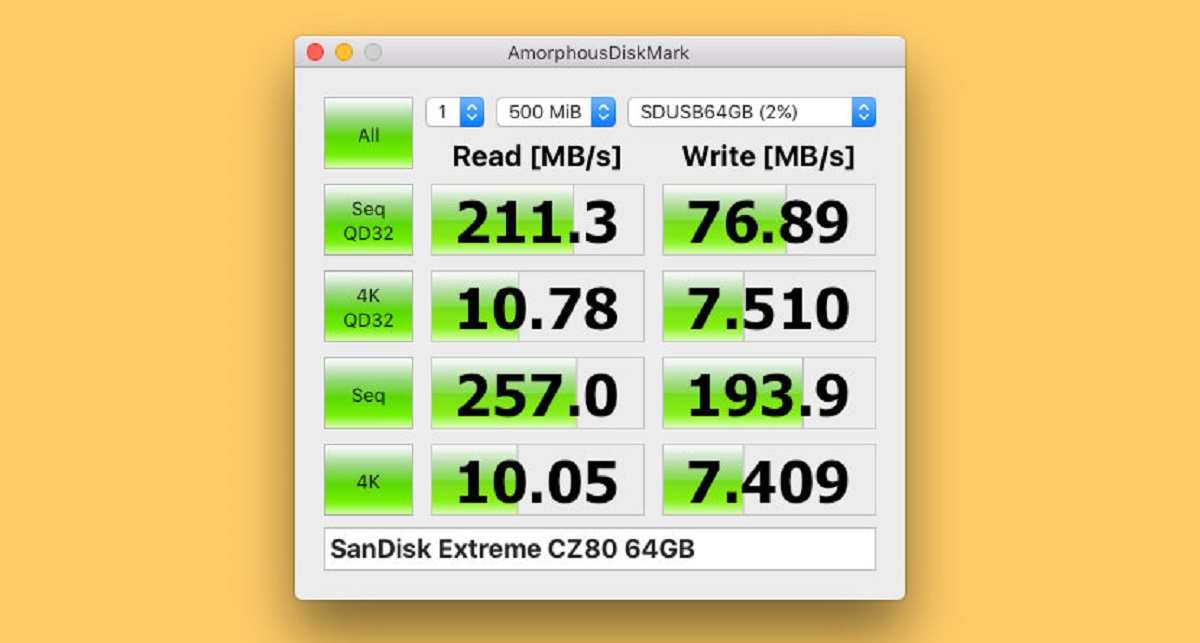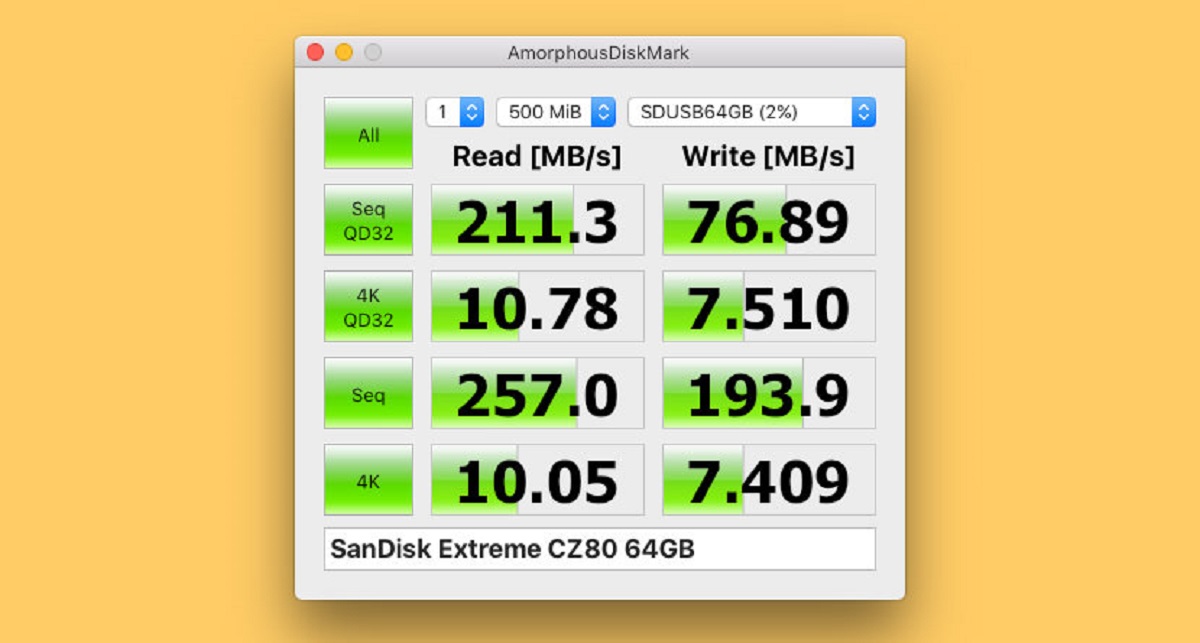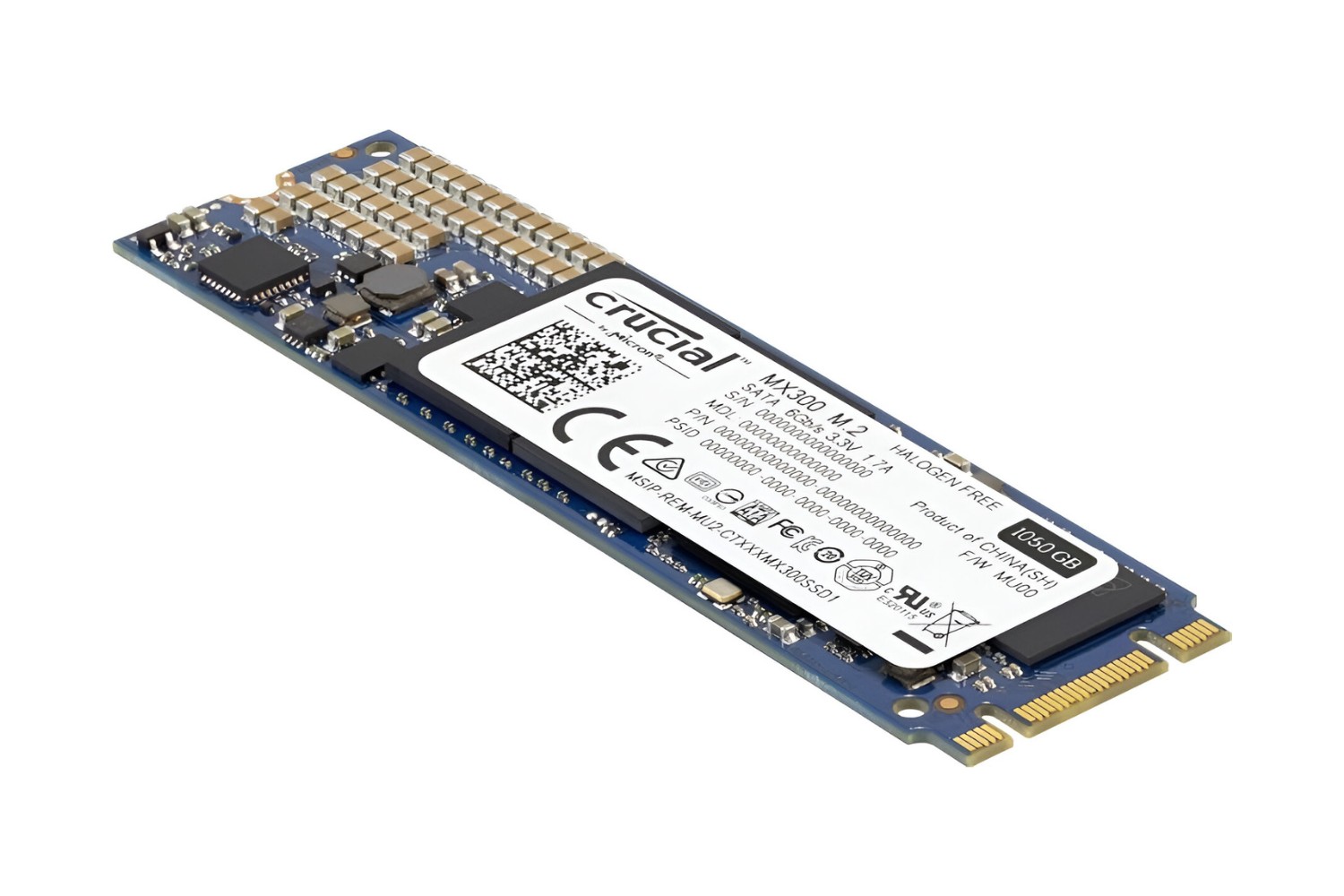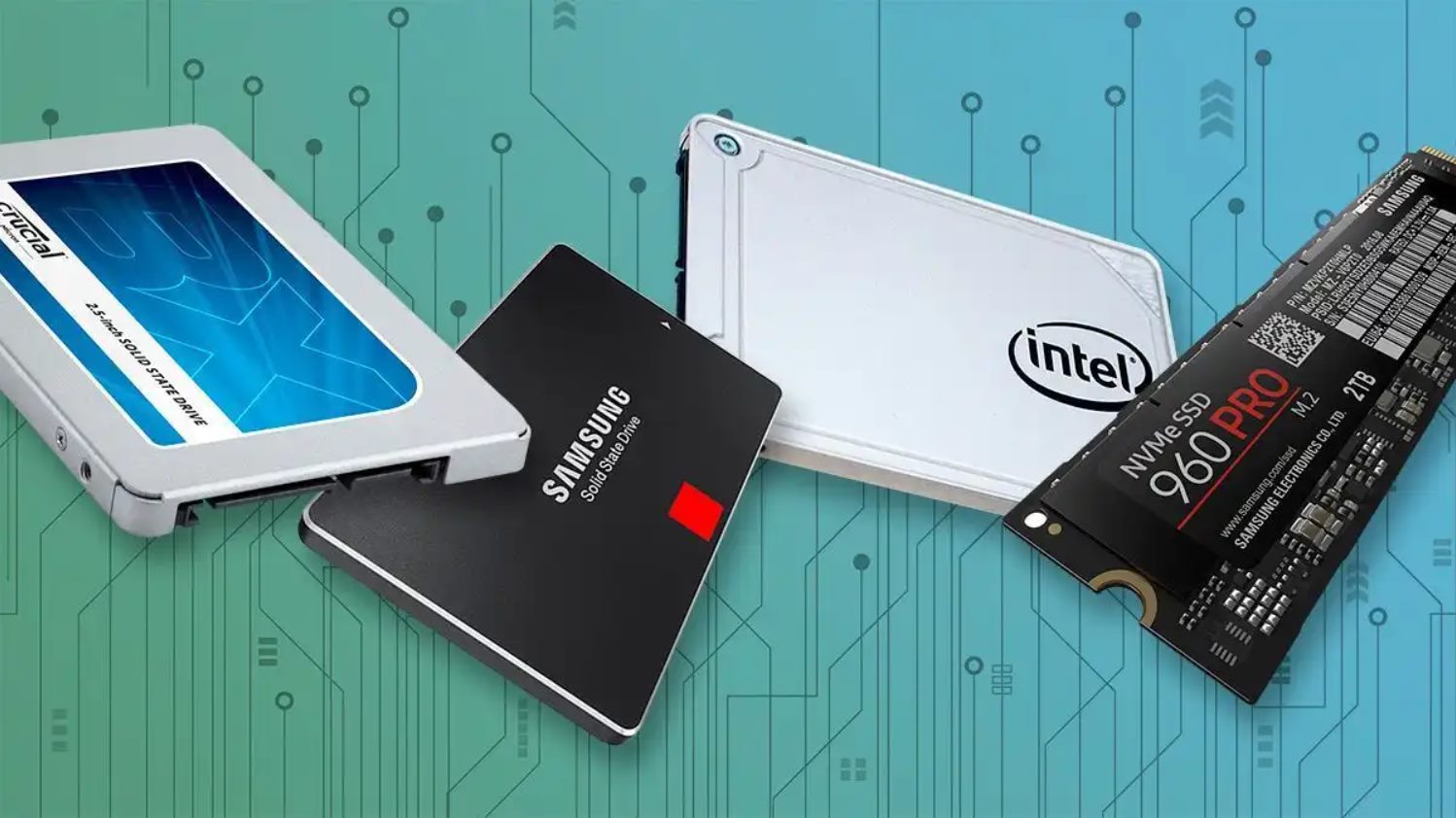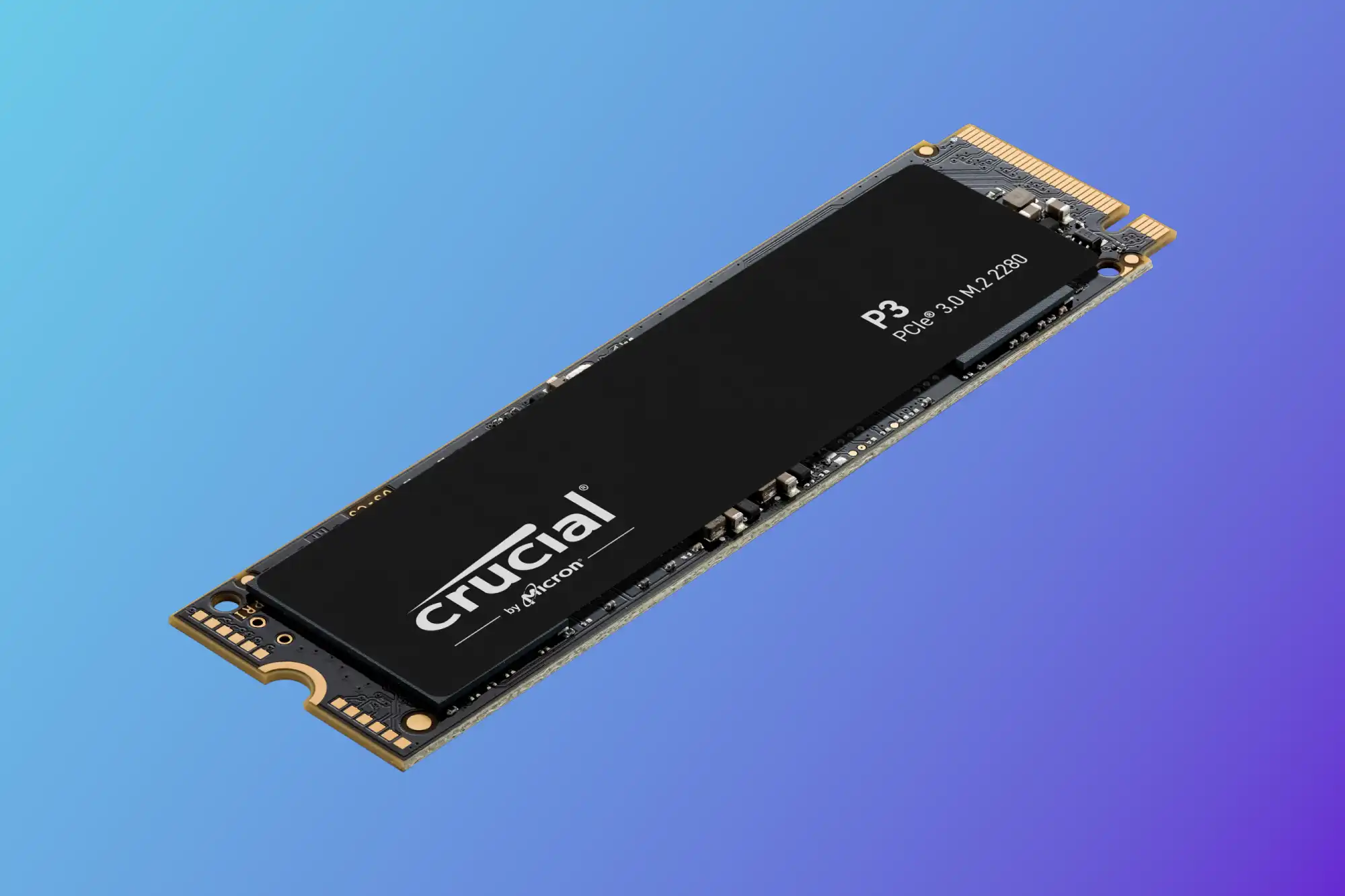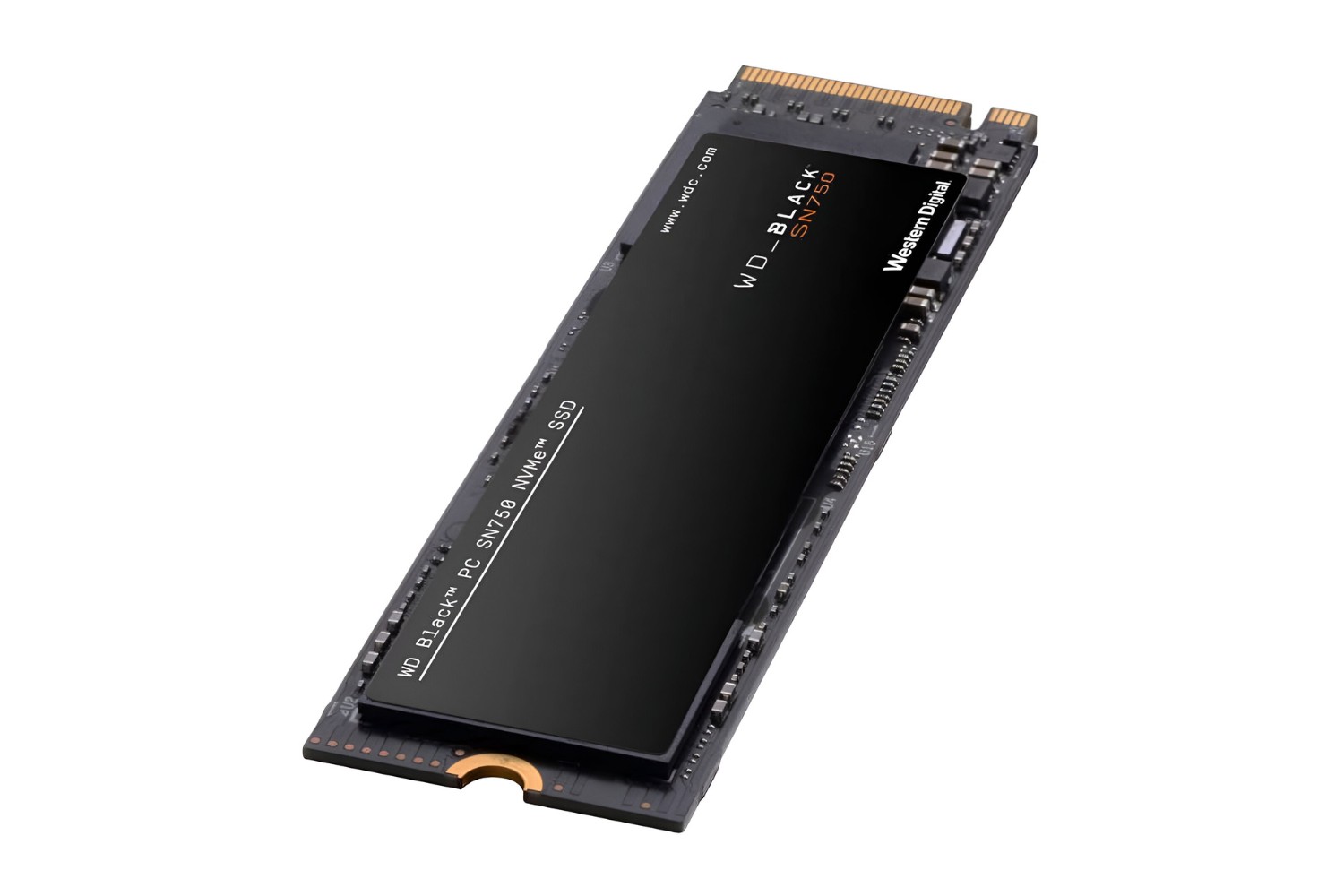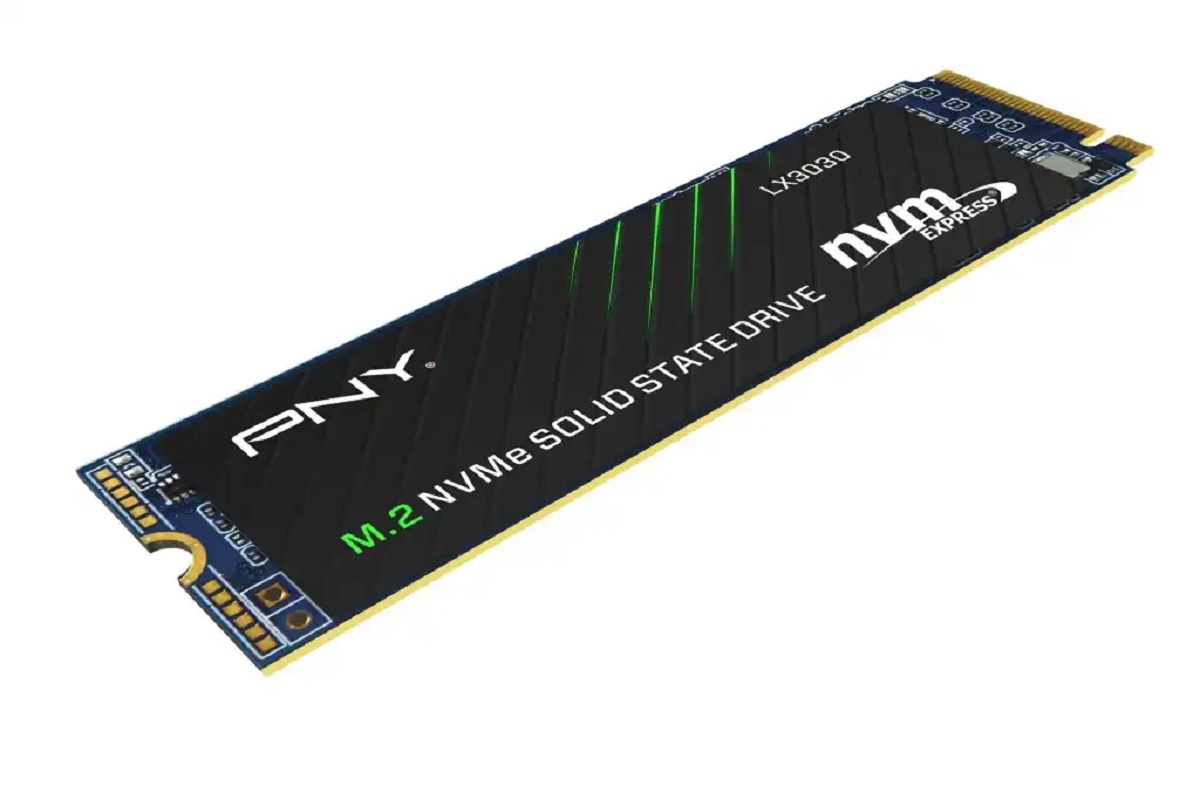Introduction
Welcome to the world of solid-state drives (SSDs), where speed and performance take center stage. In our increasingly digital age, speedy access to data is crucial, whether you’re a gamer, a content creator, or simply a computer user looking for fast and efficient storage. SSDs have revolutionized data storage by providing lightning-fast read and write speeds compared to traditional hard disk drives (HDDs).
So, what exactly is an SSD? In simple terms, it is a storage device that uses flash memory to store data permanently. Unlike HDDs, which rely on rotating magnetic disks, SSDs use non-volatile memory chips to store and retrieve data, resulting in significantly faster data access times. This makes SSDs a popular choice for those seeking improved performance and enhanced user experience.
In recent years, SSD technology has significantly advanced, leading to the development of different types of SSDs, each with its own unique features and capabilities. From standard SATA-based SSDs to high-end NVMe (Non-Volatile Memory Express) SSDs, there is a wide variety of options available to suit different needs and budgets.
When it comes to measuring the performance of SSDs, read and write speeds play a crucial role. Read speed refers to how quickly data can be retrieved from the SSD, while write speed pertains to how fast data can be written onto the drive. The faster the read and write speeds, the quicker your applications will load, files will transfer, and overall system responsiveness will be enhanced.
However, it’s important to note that the read and write speeds of an SSD can be influenced by various factors. Factors such as the type of SSD, the interface it uses, the controller, the NAND flash technology, and even the firmware can all have an impact on the final performance. Understanding these factors is key to making an informed decision when choosing an SSD that meets your specific needs.
In this article, we will delve deeper into the read and write speeds of SSDs, explore the factors that affect their performance, and discuss how to check the read and write speeds of an SSD. So, let’s embark on this journey to uncover the world of SSD speed and performance!
What is SSD?
A solid-state drive (SSD) is a type of storage device that has gained immense popularity in recent years for its speed, reliability, and efficiency. Unlike traditional hard disk drives (HDDs) that use mechanical parts to read and write data, SSDs utilize flash memory technology to store information electronically without any moving parts.
The concept of SSDs dates back to the 1980s, but it wasn’t until the early 2000s that they became more widely available and affordable for consumers. Since then, SSDs have evolved significantly, becoming the preferred choice for many computer users.
SSDs are constructed with NAND flash memory chips, which retain data even when the power supply is disconnected. The absence of moving components, such as spinning disks or mechanical read/write heads, allows SSDs to access and transfer data at blazing speeds, leading to faster boot times, application loading times, and overall system performance.
The benefits of SSDs go beyond speed and performance. Due to their solid-state design, they are less susceptible to physical damage caused by drops, shocks, or vibrations, making them more durable compared to HDDs. They are also quieter and more energy-efficient since they consume less power and generate less heat.
SSDs come in various form factors to accommodate different devices, including laptops, desktops, and even external storage drives. The most common types of SSD form factors are 2.5-inch drives, M.2 drives, and PCIe (Peripheral Component Interconnect Express) drives. These form factors offer different installation options and transfer speeds, allowing users to choose the most suitable type for their specific needs.
With the increasing demand for faster and more reliable storage solutions, SSDs continue to evolve and improve. The advancements in NAND flash technology, such as TLC (Triple-Level Cell), MLC (Multi-Level Cell), and SLC (Single-Level Cell), have led to higher storage capacities and improved endurance in modern SSDs.
In summary, an SSD is a storage device that utilizes flash memory technology, providing faster read and write speeds, durability, and improved energy efficiency. As technology evolves, the SSD market continues to expand, offering consumers an exciting range of options to significantly enhance their computing experience.
Types of SSD
When it comes to choosing an SSD, there are several types available, each offering unique advantages and catering to different needs. Let’s explore the most common types of SSDs:
- SATA SSDs: Serial ATA (SATA) SSDs are the most common and widely-used type. They connect to the computer’s motherboard via a SATA interface, just like traditional HDDs. While SATA SSDs offer significant performance improvements over HDDs, their maximum transfer speed is limited by the SATA interface’s bandwidth. Despite this limitation, SATA SSDs are a cost-effective and reliable option for most everyday computing needs.
- M.2 SSDs: M.2 SSDs are compact and slim storage solutions that connect directly to the motherboard via an M.2 slot. They utilize the PCIe (or NVMe) interface for faster data transfer speeds compared to SATA SSDs. M.2 SSDs are commonly found in laptops and small form-factor desktops, providing a balance between performance and space-saving design.
- PCIe/NVMe SSDs: PCIe/NVMe SSDs take speed and performance to the next level. Unlike SATA and M.2 SSDs, which use the SATA or PCIe interface, PCIe/NVMe SSDs use the NVMe protocol to communicate with the system’s CPU directly. This results in significantly faster transfer speeds and reduced latency. PCIe/NVMe SSDs are ideal for demanding tasks like content creation, gaming, and professional applications that require lightning-fast data access and write speeds.
- External SSDs: External SSDs are portable storage devices that connect to the computer via USB or Thunderbolt interfaces. They offer the advantage of being able to easily transfer data between different devices and are commonly used for backups, file sharing, and expanding storage on laptops and game consoles. External SSDs can come in various forms, including portable drives and enclosures that allow users to install their preferred internal SSD.
- Enterprise SSDs: Enterprise SSDs are designed for use in servers, data centers, and high-performance computing environments that demand maximum reliability and endurance. These SSDs are built to handle heavy workloads and provide superior performance, making them suitable for enterprise-grade applications and mission-critical operations.
It’s important to consider your specific requirements, budget, and compatibility with your system when choosing an SSD. Each type offers its own advantages, so evaluating your needs and understanding the differences between the SSD types will help you make an informed decision and ensure you get the best performance and value from your storage solution.
Read Speed of SSD
The read speed of an SSD refers to how quickly data can be accessed and read from the drive. It plays a crucial role in various computing tasks, such as booting up your system, loading applications, and accessing files. The faster the read speed, the quicker your system can retrieve the necessary information, resulting in improved overall performance.
SSDs are known for their exceptional read speeds, significantly outperforming traditional HDDs. The read speed of an SSD primarily depends on several factors:
- NAND Flash Technology: The type and quality of the NAND flash memory used in an SSD can have a significant impact on its read speed. There are different types of NAND flash, such as Single-Level Cell (SLC), Multi-Level Cell (MLC), and Triple-Level Cell (TLC), with varying read speeds. SLC NAND generally offers the fastest read speeds, followed by MLC and TLC.
- Controller: The SSD controller acts as the brain of the drive, managing data access and storage. A high-quality controller with advanced algorithms and efficient data processing capabilities can greatly enhance the read speed of an SSD.
- Interface: The interface used to connect the SSD to the computer’s motherboard also affects the read speed. SATA III provides maximum data transfer rates of 6 gigabits per second (Gbps). In contrast, the PCIe/NVMe interface offers significantly higher bandwidth, allowing for even faster read speeds.
- Queue Depth: Queue depth refers to the number of pending read requests that an SSD can handle simultaneously. SSDs with a higher queue depth can process multiple read requests concurrently, leading to improved read speeds, especially in situations with heavy workloads or multitasking.
- Firmware Optimization: The firmware of an SSD plays a vital role in optimizing its performance, including the read speed. Regular firmware updates from the manufacturer can often improve the read speed by fine-tuning various aspects of the drive’s operation.
It’s important to note that the advertised read speeds of SSDs represent their theoretical maximum performance and may not always be achievable in real-world scenarios. Factors such as the size and type of files being accessed, the level of fragmentation, and the overall system configuration can all impact the actual read speed experienced by the user.
To get an idea of an SSD’s read speed, you can refer to benchmark tests and reviews conducted by reputable sources. These tests provide real-world performance measurements and can help you compare different SSD models to find the one that best meets your needs.
Overall, the read speed of an SSD is a critical factor to consider when selecting a storage solution. By opting for an SSD with faster read speeds, you can enjoy quicker boot times, seamless multitasking, and swift application loading, providing a significant boost to your computing experience.
Factors affecting Read Speed of SSD
The read speed of an SSD can be influenced by various factors that impact the drive’s ability to retrieve data quickly and efficiently. Understanding these factors is crucial when selecting an SSD and optimizing its performance. Here are some key factors that can affect the read speed of an SSD:
- NAND Flash Type: The type of NAND flash memory used in an SSD can significantly impact its read speed. SLC (Single-Level Cell) NAND flash typically offers the fastest read speeds, followed by MLC (Multi-Level Cell) and TLC (Triple-Level Cell). SLC stores one bit of data per cell, while MLC and TLC store multiple bits per cell, resulting in slightly slower read speeds.
- Controller: The SSD controller plays a critical role in managing data transfer between the NAND flash memory and the system. A high-quality controller with advanced algorithms can optimize read speed by efficiently handling data retrieval and access. SSDs with more advanced controllers often offer faster read speeds.
- Interface: The interface through which the SSD connects to the computer can impact read speed. Older SATA interfaces, such as SATA II or SATA III, have limited bandwidth and slower read speeds compared to the newer PCIe (Peripheral Component Interconnect Express) or NVMe (Non-Volatile Memory Express) interfaces. PCIe/NVMe interfaces provide significantly higher bandwidth and are capable of delivering faster read speeds.
- Queue Depth: Queue depth refers to the number of pending read requests that an SSD can handle simultaneously. Higher queue depths allow for better multitasking and improved read speed in scenarios with multiple read requests. SSDs with higher queue depth capabilities can provide faster read speeds, especially in demanding workloads.
- Firmware: The firmware embedded within the SSD plays a vital role in optimizing its performance, including the read speed. Manufacturers regularly release firmware updates that can enhance the SSD’s read speed by improving drive algorithms and addressing any performance-related issues.
- File Size and Fragmentation: The size and fragmentation of files stored on the SSD can impact read speed. Smaller files generally result in faster read speeds, as they can be accessed more quickly. Fragmented files, on the other hand, can cause slower read speeds, as the drive may need to seek and retrieve data from multiple locations on the NAND flash memory.
- System Configuration: The overall configuration of your system, including the CPU, RAM, and other hardware components, can influence the read speed of an SSD. A powerful system with ample resources can support faster read speeds by efficiently processing data and minimizing any bottlenecks.
It’s important to consider these factors when selecting an SSD to ensure it aligns with your performance requirements. Keep in mind that real-world read speeds may deviate from the manufacturer’s specifications due to varying circumstances and system configurations. Consulting reputable reviews and benchmark tests can provide valuable insights into the actual read speeds experienced by users in different scenarios.
By understanding the factors that affect the read speed of an SSD, you can make an informed decision when choosing a storage solution that best suits your needs and optimize the performance of your system for faster data access and retrieval.
Write Speed of SSD
The write speed of an SSD refers to how quickly data can be written onto the drive. It plays a crucial role in tasks such as saving files, installing applications, and transferring data. A faster write speed ensures that data is written efficiently, improving overall system responsiveness. SSDs have become popular due to their impressive write speeds, which surpass those of traditional hard disk drives (HDDs).
Several factors influence the write speed of an SSD:
- NAND Flash Technology: The type of NAND flash memory used in an SSD has a direct impact on its write speed. SLC (Single-Level Cell) NAND flash, with its higher endurance and faster write speeds, outperforms MLC (Multi-Level Cell) and TLC (Triple-Level Cell) NAND flash, which offer higher capacities but slightly slower write speeds.
- Controller: The SSD controller plays a crucial role in managing data writes to the NAND flash memory. A high-quality controller with advanced algorithms and efficient data handling capabilities can optimize the write speed and overall performance of the SSD.
- Interface: The interface used to connect the SSD to the computer’s motherboard affects the write speed. SATA III interfaces, although limited in bandwidth, can still offer decent write speeds. However, newer interfaces like PCIe (Peripheral Component Interconnect Express) and NVMe (Non-Volatile Memory Express) can provide significantly faster write speeds due to their higher transfer rates.
- Queue Depth: Similar to the read speed, the queue depth of an SSD also affects its write speed. SSDs with higher queue depth capabilities can handle multiple write requests simultaneously, resulting in improved write performance, especially in scenarios with intense write workloads.
- Firmware Optimization: The firmware of an SSD plays a crucial role in optimizing its write performance. Regular firmware updates from the manufacturer can enhance the write speed by improving how the SSD handles data writes and optimizing overall performance.
- File System: The file system used on the SSD can affect its write speed. More efficient file systems, such as NTFS or APFS, can provide faster write speeds compared to older file systems like FAT32 or exFAT.
- Over-Provisioning: Over-provisioning refers to allocating a portion of the SSD’s capacity for internal use by the controller. This improves the SSD’s performance and endurance. The extent of over-provisioning can impact the write speed, as a higher over-provisioned space can result in better performance.
It’s important to note that the actual write speed experienced may vary depending on various factors, including the file size, the file system, and the overall system configuration. However, SSDs generally offer significantly faster write speeds compared to HDDs, making them an excellent choice for tasks that involve frequent data writes.
When choosing an SSD, considering factors that affect both read and write speeds is crucial. A balance between read and write performance ensures an optimal user experience and a smooth computing environment. Evaluating these factors will help you select an SSD that meets your specific requirements and provides fast and efficient data write speeds.
Factors affecting Write Speed of SSD
The write speed of an SSD plays a significant role in various computing tasks, such as saving files, installing applications, and transferring data. It determines how quickly the SSD can write data onto its storage medium. Several factors can influence the write speed of an SSD, including:
- NAND Flash Technology: The type of NAND flash memory used in an SSD affects its write speed. SLC (Single-Level Cell) NAND flash, with its ability to store one bit of data per cell, offers the fastest write speeds. MLC (Multi-Level Cell) and TLC (Triple-Level Cell) NAND flash, with their higher storage density, provide slightly slower write speeds but higher capacities.
- Controller: The SSD controller is responsible for managing data writes to the NAND flash memory. A high-quality controller with efficient algorithms and advanced features can optimize the write speed and overall performance of the SSD.
- Interface: The interface used to connect the SSD to the computer’s motherboard affects the write speed. Older interfaces like SATA III have limited bandwidth, which can result in slower write speeds. Newer interfaces like PCIe (Peripheral Component Interconnect Express) and NVMe (Non-Volatile Memory Express) offer higher transfer rates, enabling faster write speeds.
- Queue Depth: The queue depth refers to the number of pending write requests that an SSD can handle simultaneously. SSDs with higher queue depth capabilities can process multiple write requests concurrently, improving write performance, especially in scenarios with significant write workloads.
- Firmware Optimization: The firmware embedded within the SSD plays a crucial role in optimizing its write performance. Firmware updates from the manufacturer can enhance the write speed by implementing improved algorithms and addressing any performance-related issues.
- File System: The file system used on the SSD can impact write speed. Efficient file systems, such as NTFS or APFS, can provide faster write speeds compared to older file systems like FAT32 or exFAT.
- Over-Provisioning: Over-provisioning involves allocating a portion of the SSD’s capacity for internal use by the controller. This allows the SSD to distribute wear evenly across the NAND flash memory and improves write performance and endurance.
While SSDs offer significantly faster write speeds compared to traditional hard disk drives (HDDs), it’s important to note that real-world write speeds may vary depending on various factors. These factors include the file size, the file system, the drive’s state of fragmentation, and the overall system configuration.
Understanding the factors that affect write speed enables you to make informed decisions when selecting an SSD. By considering these factors, you can choose an SSD that meets your specific requirements, ensuring fast and efficient data write speeds for a seamless computing experience.
How to Check Read and Write Speed of SSD?
Knowing how to check the read and write speed of your SSD can help you assess its performance and ensure that it’s functioning optimally. Fortunately, there are several tools and methods available to measure the speed of your SSD. Here are some common ways to check the read and write speed of your SSD:
- Use Benchmarking Software: Many benchmarking programs are specifically designed to test the performance of storage devices, including SSDs. One popular benchmarking tool is CrystalDiskMark, which measures sequential and random read/write speeds. Other options include AS SSD Benchmark and ATTO Disk Benchmark, which provide detailed insights into SSD performance.
- Check Manufacturer Specifications: SSD manufacturers often provide detailed specifications for their drives, including their read and write speeds. These specifications can be found on the manufacturer’s website or in the product documentation. However, it’s important to note that the manufacturer’s advertised speeds may represent the drive’s best-case scenario and may not be the real-world speeds you experience.
- Refer to Independent Reviews and Tests: Reputable technology websites and publications regularly conduct SSD reviews and performance tests. These tests measure the actual read and write speeds of SSDs in real-world scenarios and offer valuable insights into their performance. Checking independent reviews can provide a more realistic understanding of an SSD’s speed compared to manufacturer claims.
- Use Built-in System Monitoring Tools: Some operating systems offer built-in tools to monitor the performance of storage devices. For example, Windows users can use the Task Manager or Performance Monitor to view resource utilization and disk performance. macOS users can utilize the Activity Monitor or third-party tools like Blackmagic Disk Speed Test to measure SSD performance.
When using benchmarking software or conducting tests, it’s advisable to close any unnecessary applications and ensure that the SSD is not under heavy load to obtain more accurate results. Keep in mind that various factors, such as the file size, the file system, and the overall system configuration, can influence the read and write speeds you observe.
Regularly checking the read and write speeds of your SSD can help you identify any performance issues or changes over time. It’s important to note that SSD performance can degrade over prolonged use, but regular maintenance, firmware updates, and optimization techniques can help prolong the lifespan and maintain optimal performance.
By utilizing benchmarking software, checking manufacturer specifications, referring to independent reviews, and using built-in system monitoring tools, you can effectively measure the read and write speed of your SSD and ensure that it’s delivering the performance you expect.
Conclusion
Solid-state drives (SSDs) have revolutionized the world of storage, offering lightning-fast read and write speeds compared to traditional hard disk drives (HDDs). In this article, we explored the various aspects of SSD speed and performance, including their read and write speeds, factors affecting their performance, and methods to check their speeds.
SSDs excel in delivering faster data access, improved system responsiveness, and enhanced overall performance. The read speed of an SSD determines how quickly data can be retrieved, while the write speed influences the speed at which data can be written onto the drive. Both these factors are vital for seamless computing experiences, whether you’re a content creator, a gamer, or simply a computer user requiring efficient storage solutions.
Factors such as the type of NAND flash technology, the SSD controller, the interface, the queue depth, firmware optimization, file system, and over-provisioning can impact the read and write speeds of an SSD. By understanding these factors, you can make informed decisions when selecting an SSD that aligns with your specific needs and maximizes your system’s performance.
To check the read and write speeds of an SSD, you can utilize benchmarking software, refer to manufacturer specifications, rely on independent reviews and tests, and use built-in system monitoring tools. These methods allow you to accurately measure the performance of your SSD and identify any potential issues.
Remember that real-world performance may vary from manufacturer specifications, and several factors, such as file size, file system, and system configuration, can impact the observed speeds. Ongoing maintenance, firmware updates, and optimization techniques can help preserve the SSD’s performance over time and extend its lifespan.
In conclusion, the read and write speeds of SSDs have transformed the way we store and retrieve data, offering unmatched speed, reliability, and efficiency. By considering the factors influencing performance and conducting regular speed checks, you can ensure that your SSD continues to deliver the fast and responsive storage experience you desire.







